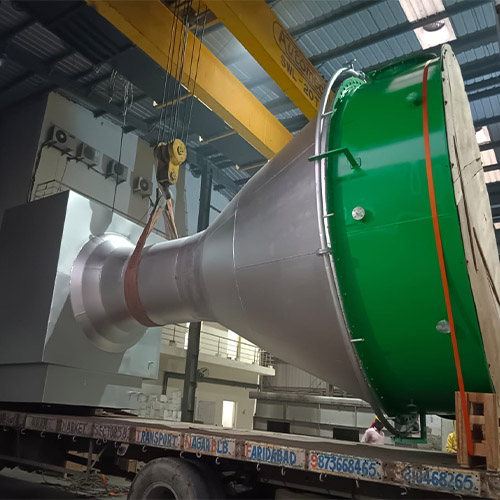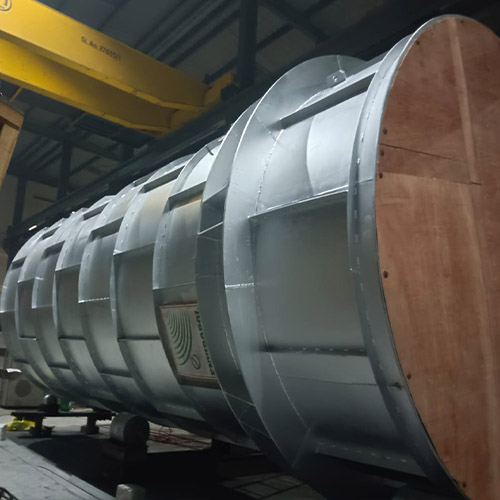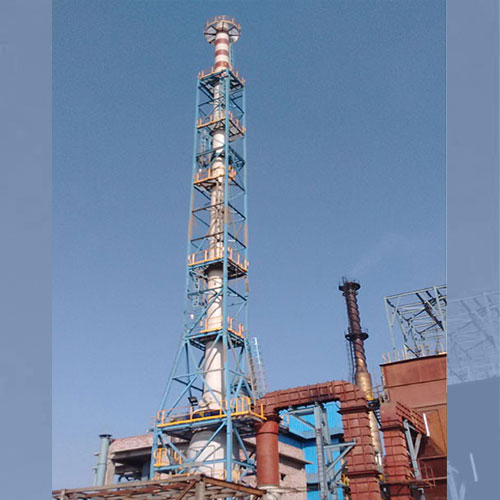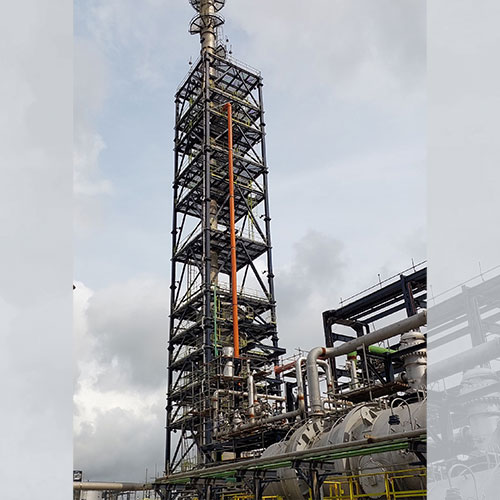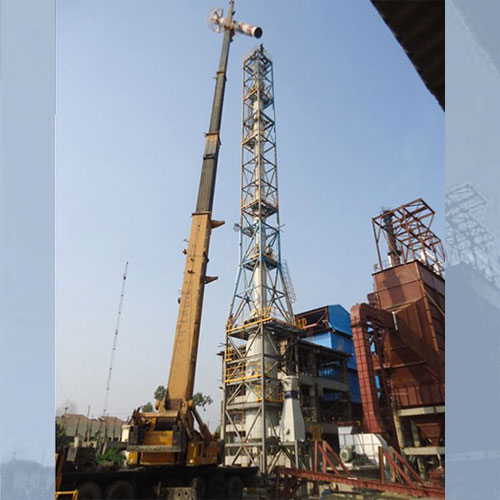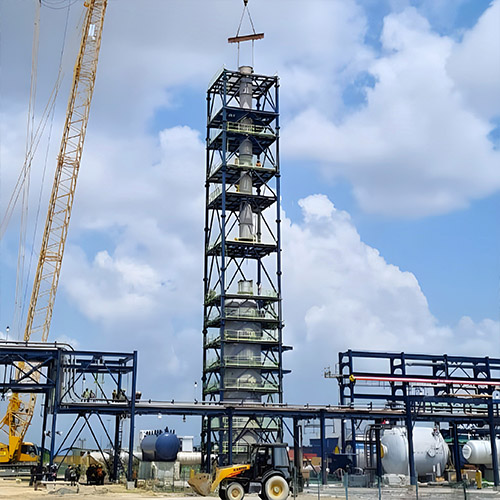Flue Gas Desulfurization (FGD) Systems by Enviropol Engineers
Flue Gas Desulfurization (FGD) is a technology used to remove sulfur dioxide (SO2) and other acid gases from the flue gases of industrial processes, particularly from the exhaust of coal-burning power plants, cement kilns, and industrial boilers. The primary goal of FGD is to reduce the emission of sulfur dioxide and mitigate acid rain, as well as reduce the environmental and health impacts associated with sulfur dioxide emissions.
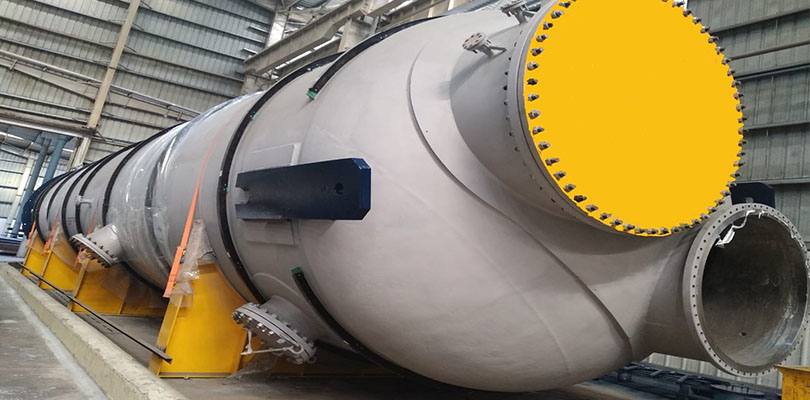
FGD technologies have evolved over the years, resulting in several methods for achieving this goal. Here's an overview of FGD technologies:
1. Wet Flue Gas Desulfurization (Wet FGD):
Limestone-Gypsum Process: This is the most widely used wet FGD technology. It involves the use of a wet scrubber to react flue gas with a slurry of limestone (CaCO3) and water. Sulfur dioxide is absorbed by the slurry, forming calcium sulfite (CaSO3), which is then oxidized to produce calcium sulfate (CaSO4), or gypsum. Gypsum is a valuable byproduct that can be used in construction materials.
Seawater Scrubbing: In some coastal areas, seawater is used as an absorbent in the scrubber instead of limestone. Seawater FGD is a more sustainable option and is often used in locations where limestone availability is limited.
MagneGas Process: This is a variation of the wet FGD process that uses magnesium oxide (MgO) as the absorbent instead of limestone. It offers improved sulfur dioxide removal efficiency.
2. Dry Flue Gas Desulfurization (Dry FGD):
Spray Dryer Absorber (SDA): In the SDA process, a dry powder sorbent, such as hydrated lime (Ca(OH)2) or sodium bicarbonate (NaHCO3), is injected into the flue gas stream. The sorbent reacts with sulfur dioxide, forming solid particles that are collected by particulate control equipment like bag filters or electrostatic precipitators.
Circulating Dry Scrubber (CDS): In this method, a dry sorbent is injected into the flue gas, and the reaction products are collected in a downstream fabric filter.
Dry Sorbent Injection (DSI): DSI involves the injection of a dry sorbent, such as lime or sodium-based sorbents, directly into the flue gas duct. The sorbent reacts with sulfur dioxide and is removed with the fly ash in the particulate control equipment.
3. Circulating Fluidized Bed (CFB) Flue Gas Desulfurization:
This FGD technology uses a CFB reactor to inject sorbent particles (typically limestone or calcium-based sorbents) into the flue gas. The sorbent captures sulfur dioxide, and the reaction products are collected in a downstream particle separator.
Each FGD technology has its advantages and disadvantages, and the choice of FGD method depends on factors such as the specific emissions control requirements, the availability of sorbents, cost considerations, and local environmental regulations. FGD plays a vital role in reducing sulfur dioxide emissions and improving air quality by preventing acid rain and minimizing the environmental and health effects of acid gases.
Why Choose Enviropol Engineers for FGD Systems?
Air pollution control is one of the most difficult issues in our modern world of industrialization. With more stringent environmental regulations and an increasing awareness of environmentally sustainable practices, companies have to adopt innovative solutions to limit harmful emissions. The most important solutions in this field involves the flue gas de-sulphurisation process (FGD) that is designed to reduce sulfur dioxide (SO2) emissions from thermal power plants, steel plants cement industries, and many other industries that rely on fuel.
At Enviropol Engineers, we specialize in the development of efficient flue gas desulfurization systems which not only guarantee compliance with regulations, but also help to create cleaner and healthier air for future generations.
Types of Flue Gas Desulphurization Systems
At Enviropol we develop and provide FGD solutions that meet diverse industrial requirements. Based on the specific needs of the client and the application the flue gas desulphurisation systems may be broadly divided into:
1. Wet FGD Systems- They are the most commonly used systems. In these, an alkaline reagent like lime or limestone is spraying into the flue gas stream in order to absorb SO2. Gypsum, the byproduct, could be recycled in the construction or cement industry.
2. Dry and Semi-Dry- suitable for small and medium-sized businesses These systems make use of dry sorbents or slurry which responds to SO2. They are small and efficient, and consume less water as compared to wet systems.
3. Customized Hybrid Solutions- Enviropol Engineers also develops hybrid flue gas desulphurisation solutions for particular operating conditions, assisting customers achieve the ideal equilibrium between cost, efficiency and operating ease.
Why Choose Enviropol Engineers for FGD Systems?
Enviropol Engineers is a trusted name in the field of air pollution control and energy efficiency solutions that are sustainable. What makes our flue gas de-sulfurization systems from others:
1. Expertise and Experience- Over a decade of engineering excellence in the development and execution of pollution control projects across the globe.
2. End-to-End Solutions from designs and feasibility studies, to manufacturing, installation and after-sales services We offer complete assistance.
3. Effective Technology that is Cost-Effective: All of our products are designed to maximize performance and durability, assuring the lowest operating expenses.
4. Sustainability- The focus of our work is to create FGD plants that don't just conform to the regulations but also create usable by-products, such as gypsum. which support circular economy practices.
5. Environmental Standards Global: Systems from Enviropol comply with international emission norms as well as environmental standards.
Applications of Flue Gas Desulphurisation
Our FGD systems for flue gas desulphurisation are extensively used in:
1. The thermal power plant (coal oil, coal, and biomass-based)
2. Industries of metal processing and steel
3. Cement plants
4. Refineries and Petrochemical units
5. Waste-to-energy plants
Through the use of these systems businesses can reduce 95-99% of SO2 emissions and ensure the strictest emission standards.
Commitment to a Cleaner Future
At Enviropol Engineers, we believe sustainability and technology must go hand-in-hand. Each flue gas desulphurisation device we make reflects our dedication to reducing pollution while aiding industries achieve environmentally responsible expansion strategies. Our aim is to offer eco-friendly yet reliable solutions which contribute to creating an eco-friendly, greener tomorrow for industries.
Partner with Enviropol Engineers
Enviropol Engineers delivers reliable flue gas desulfurization (FGD) technology. Leveraging our experience, personalized approach, and commitment to innovation we ensure your company complies with environmental regulations while contributing towards sustainability initiatives.
Contact us immediately to gain more knowledge on our flue gas desulphurisation solutions, and take steps towards more eco-friendly industrial operations! We look forward to speaking with you about these exciting steps towards greener industrial operations!
